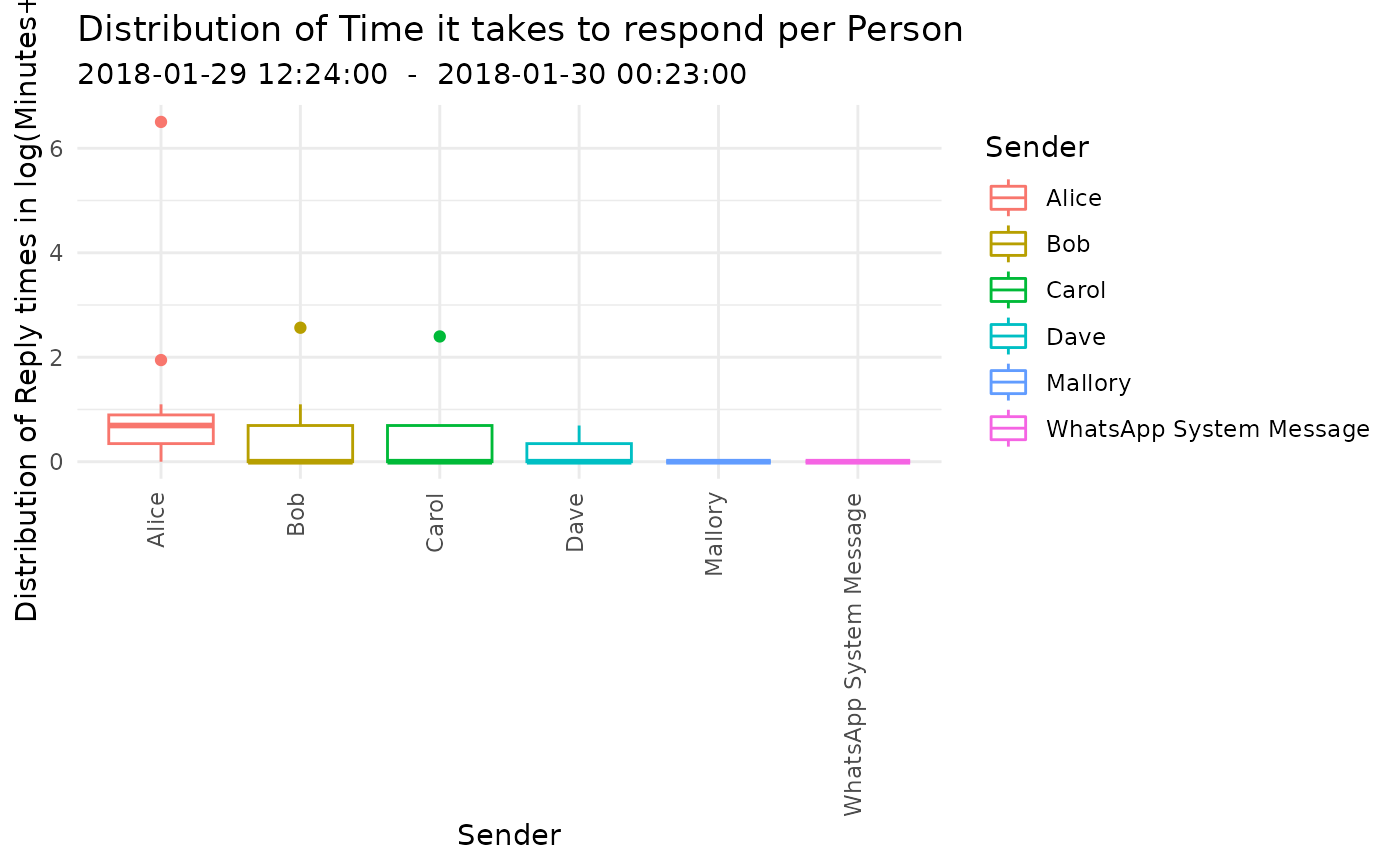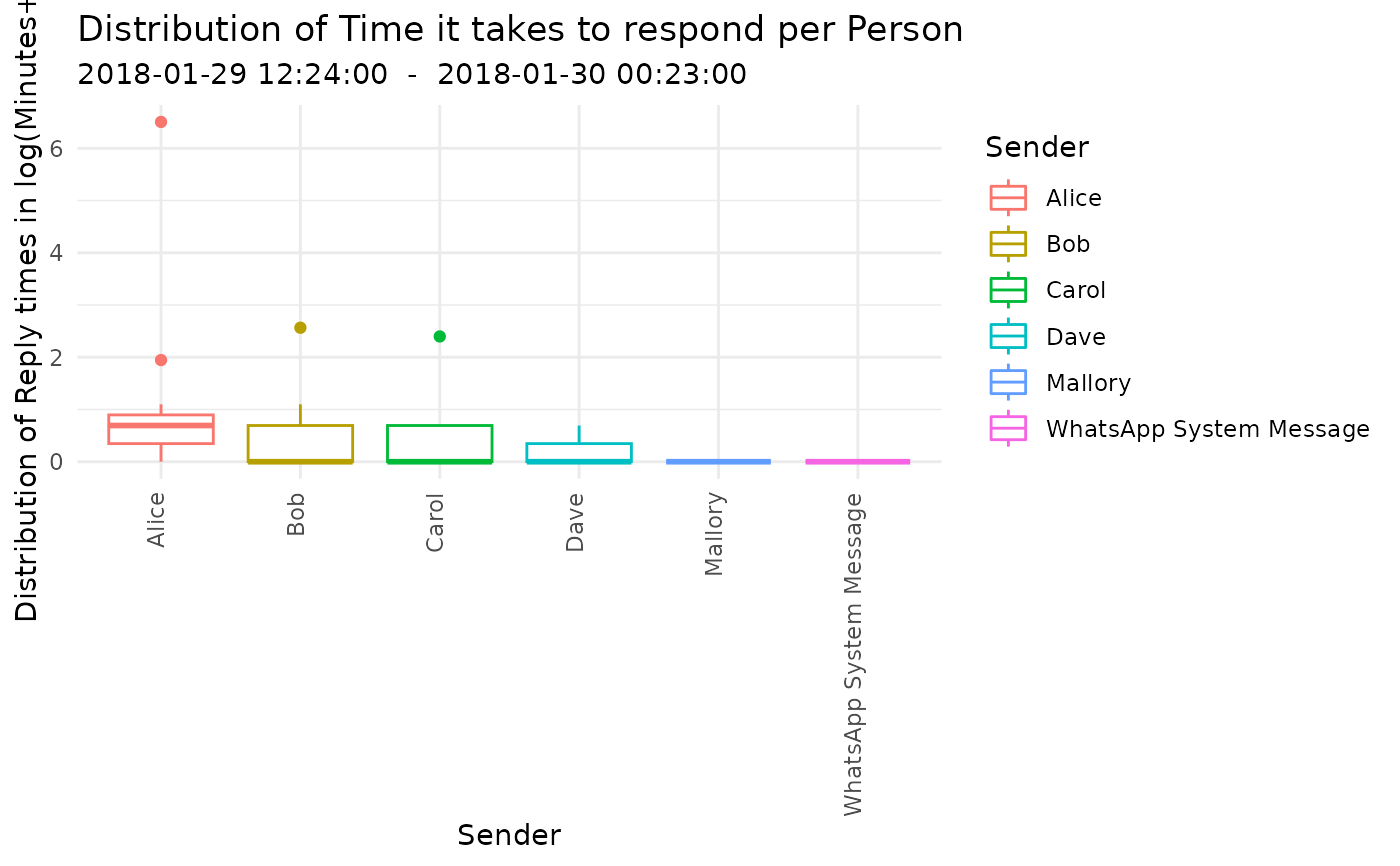Visualizing replytimes in 'WhatsApp' chat logs
plot_replytimes.RdVisualizes the reply times and reaction times to messages per author
plot_replytimes(
data,
names = "all",
starttime = "1960-01-01 00:00",
endtime = "2200-01-01 00:00",
return_data = FALSE,
aggregate_sessions = TRUE,
plot = "box",
type = "replytime",
exclude_sm = FALSE
)Arguments
- data
A 'WhatsApp' chat log that was parsed with
parse_chat.- names
A vector of author names that the plots will be restricted to.
- starttime
Datetime that is used as the minimum boundary for exclusion. Is parsed with
as.POSIXct. Standard format is "yyyy-mm-dd hh:mm". Is interpreted as UTC to be compatible with 'WhatsApp' timestamps.- endtime
Datetime that is used as the maximum boundary for exclusion. Is parsed with
as.POSIXct. Standard format is "yyyy-mm-dd hh:mm". Is interpreted as UTC to be compatible with 'WhatsApp' timestamps.- return_data
If TRUE, returns a data frame of response times extracted from the chat for more elaborate plotting. Default is FALSE.
- aggregate_sessions
If TRUE, concurrent messages of the same author are aggregated into one session. Default is TRUE.
- plot
Type of plot to be returned, options are "box" and "heatmap".
- type
If "replytime", plots display how much time it takes authors to reply to previous message, if "reactiontime", plots display how much time it takes for authors to get responded to.
- exclude_sm
If TRUE, excludes the 'WhatsApp' system messages from the data. Default is FALSE.
Value
Plots for Replytimes or Reactiontimes of authors. Input will be ordered by TimeOrder column.
Examples
data <- readRDS(system.file("ParsedWhatsAppChat.rds", package = "WhatsR"))
plot_replytimes(data)
#> Warning: NaNs produced
#> Warning: NaNs produced
#> Warning: Removed 1 rows containing non-finite values (`stat_boxplot()`).
 #> Warning: NaNs produced
#> Warning: NaNs produced
#> Warning: Removed 1 rows containing non-finite values (`stat_boxplot()`).
#> Warning: NaNs produced
#> Warning: NaNs produced
#> Warning: Removed 1 rows containing non-finite values (`stat_boxplot()`).
